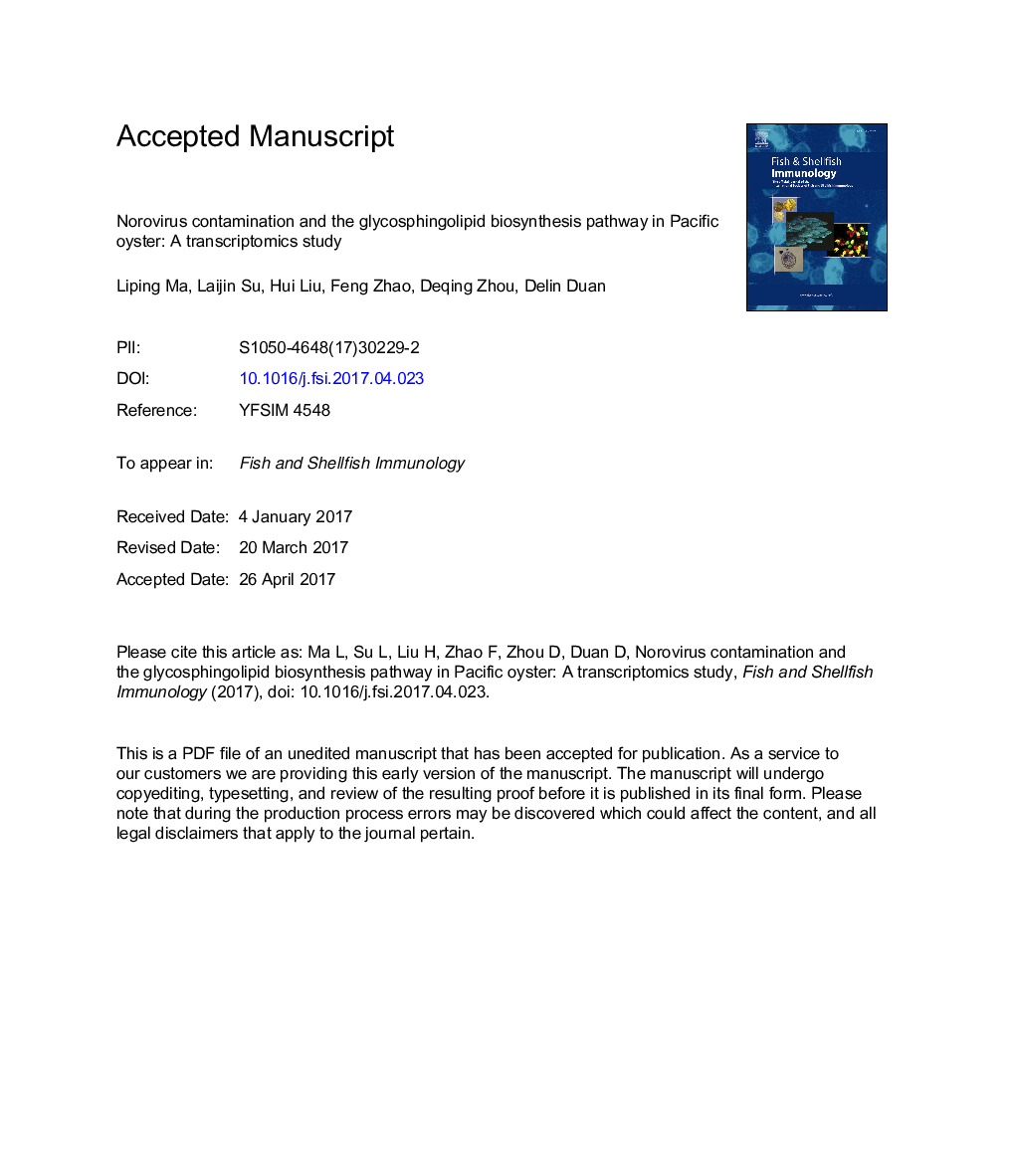| کد مقاله | کد نشریه | سال انتشار | مقاله انگلیسی | نسخه تمام متن |
|---|---|---|---|---|
| 5540706 | 1553608 | 2017 | 40 صفحه PDF | دانلود رایگان |
عنوان انگلیسی مقاله ISI
Norovirus contamination and the glycosphingolipid biosynthesis pathway in Pacific oyster: A transcriptomics study
ترجمه فارسی عنوان
آلودگی نوروویری و مسیر بیوسنتز گلیسفسنگلیپید در اورست اقیانوس آرام: یک مطالعه ترانسپکتومایک
دانلود مقاله + سفارش ترجمه
دانلود مقاله ISI انگلیسی
رایگان برای ایرانیان
کلمات کلیدی
موضوعات مرتبط
علوم زیستی و بیوفناوری
علوم کشاورزی و بیولوژیک
علوم آبزیان
چکیده انگلیسی
Noroviruses are the primary pathogens associated with shellfish-borne gastroenteritis outbreaks. These viruses remain stable in oysters, suggesting an active mechanism for virus concentration. In this study, a deep RNA sequencing technique was used to analyze the transcriptome profiles of Pacific oysters at different time points after inoculation with norovirus (GII.4). We obtained a maximum of 65, 294, 698 clean sample reads. When aligned to the reference genome, the average mapping ratio of clean data was approximately 65%. In the samples harvested at 12, 24, and 48Â h after contamination, 2,223, 2,990, and 2020 genes, respectively, were differentially expressed in contaminated and non-contaminated oyster digestive tissues, including 500, 1748, and 1039 up-regulated and 1723, 1242, and 981 down-regulated genes, respectively. In particular, FUT2 and B3GNT4, genes encoding the signaling components of glycosphingolipid biosynthesis, were significantly up-regulated in contaminated samples. In addition, we found up-regulation of some immune- and disease-related genes in the MHC I pathway (PA28, HSP 70, HSP90, CANX, BRp57, and CALR) and MHC II pathway (GILT, CTSBLS, RFX, and NFY), although NoVs did not cause diseases in the oysters. We detected two types of HBGA-like molecules with positive-to-negative ratios similar to type A and H1 HBGA-like molecules in digestive tissues that were significantly higher in norovirus-contaminated than in non-contaminated oysters. Thus, our transcriptome data analysis indicated that a human pathogen (GII.4 Norovirus) was likely concentrated in the digestive tissues of oysters via HBGA-like molecules that were synthesized by the glycosphingolipid biosynthesis pathway. The identified differentially expressed genes also provide potential candidates for functional analysis to identify genes involved in the accumulation of noroviruses in oysters.
ناشر
Database: Elsevier - ScienceDirect (ساینس دایرکت)
Journal: Fish & Shellfish Immunology - Volume 66, July 2017, Pages 26-34
Journal: Fish & Shellfish Immunology - Volume 66, July 2017, Pages 26-34
نویسندگان
Liping Ma, Laijin Su, Hui Liu, Feng Zhao, Deqing Zhou, Delin Duan,
